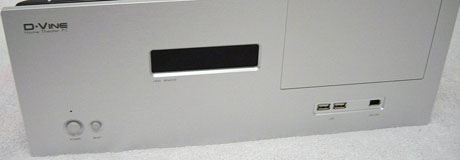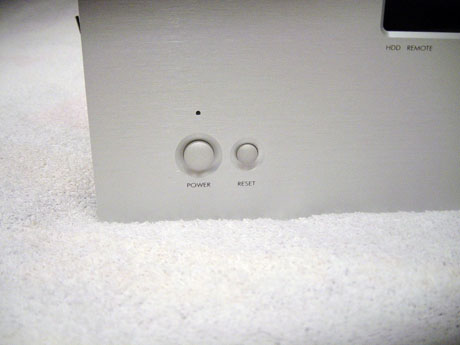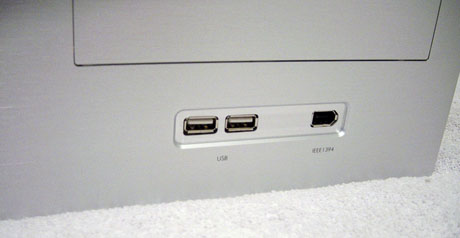A First Look at the HTPC Case Genre with the Ahanix D.Vine 4
by Purav Sanghani on October 10, 2004 1:00 PM EST- Posted in
- Cases/Cooling/PSUs
External Design
When looking at an audio/video enthusiast's playground, the first thing that we notice is the array of components on shelves or in closets. Each component has an important role in the entire system, technologically, but we also notice that each component is designed in a similar manner. Looks are not always a huge factor when choosing a home theater component, but when moving into the realm of PCs and PC cases, looks become as important as what is inside the system.Many home theater enthusiasts not only go for the quality of the sound and video being produced by their equipment, but also how each component will look in their setup, especially when dropping a few grand into their new toys. This is where the outer shell of an HTPC case can make a world of difference.
All of the case manufacturers that have tapped into the HTPC case market have their own style in looks. As time goes on and the variety of HTPC cases grows, it will become much easier to match certain cases with home theater components. For example, Ahanix's D.Vine 4, which we will be looking at in this article, comes in black and silver, which expands its compatibility, visually, among a wider range of brand name components. Sony's ES series of home theater receivers, as an example, comes in a silver finish and features a small display much like Ahanix's VFD (Vacuum Florescent Display), which is located at the center of the bezel.
The D.Vine 4 series of HTPC cases has an all-aluminum bezel that is about 8mm thick. There is a power and reset button on the bottom left, which are colored silver. Above the larger power button is the blue power LED, which gives the face a cool blue and silver theme.
The right side of the bezel consists of a fold-down aluminum door that covers the two exposed 5-1/4" drive bays. The door is well secured to the bezel by magnets and requires a firm pull to release it.
Below this area are the auxiliary USB and FireWire ports. The audio (headphone out and microphone) ports are missing from this case, since it will be sitting with the other components and not within wires reach. HTPC cases are usually connected to the audio equipment of the theater system.














21 Comments
View All Comments
Zim - Sunday, October 10, 2004 - link
You don't need to spend $300 on a HTPC case. Just get yourself a nice desktop or mini-tower AT case for $100 or less. Personally I built my HTPC for about $400 using spare bits and pieces and some kit from NewEgg.